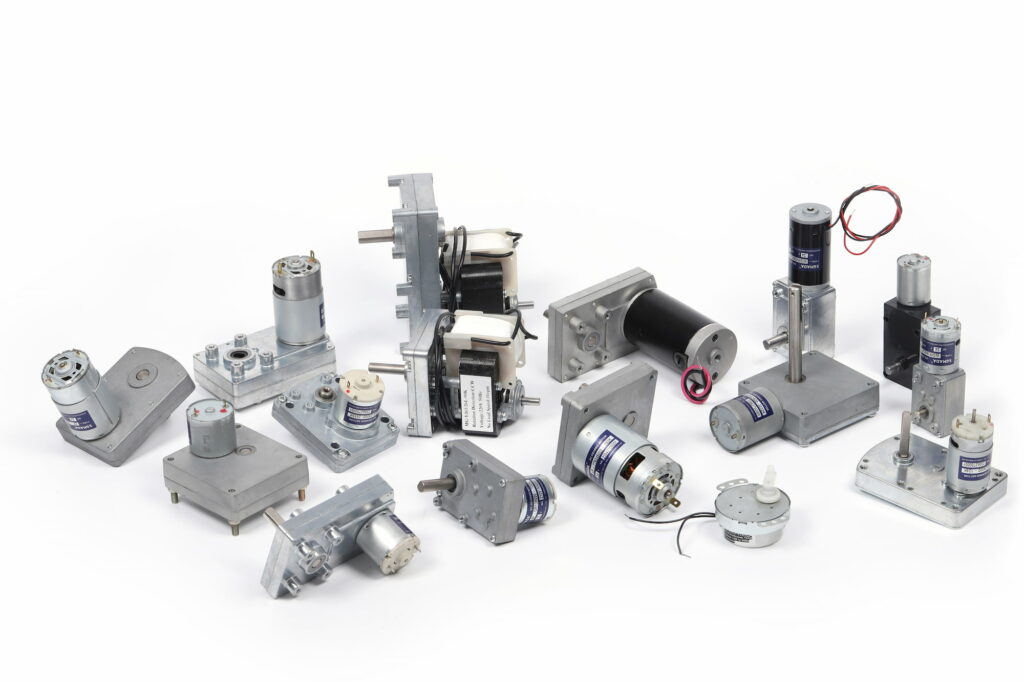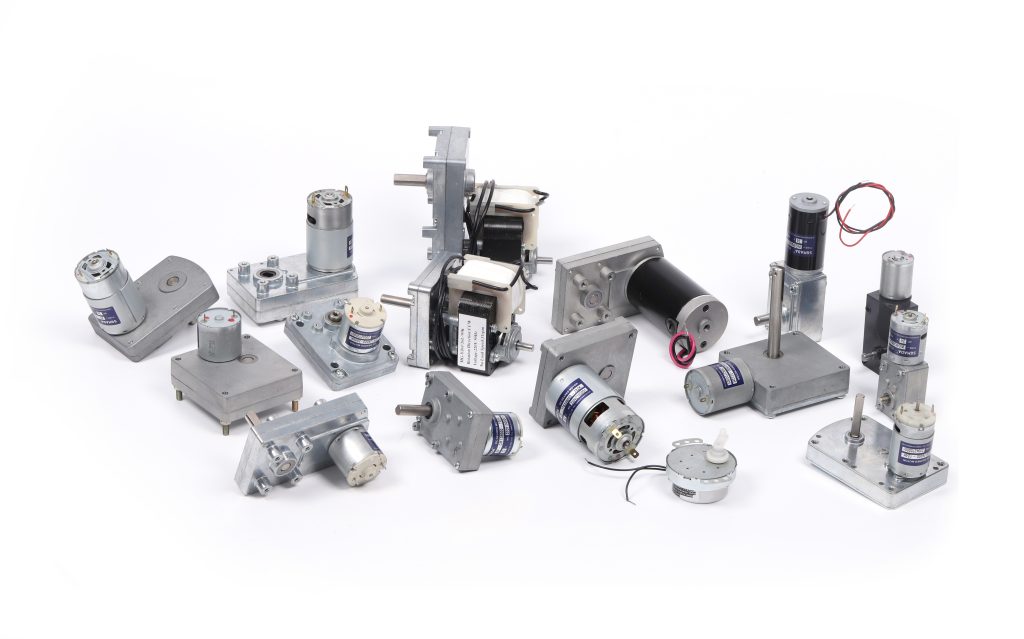The application of robots is becoming more and more widespread, which plays an important role in industrial production and improvement of efficiency. Industrial robots mainly use servo motors for motion control to move and grab tools. This article will discuss in detail the characteristics of servo motors and the corresponding control principles for different types of servo motors.
Motion control principle
Motion control is closely related to robotics. Robots in industrial applications must use actuators composed of various motors to move on their own to perform tasks or grab tools through robot arms.
The robot’s motion control system usually consists of a motor controller, a motor driver, and a motor body (mostly servo motors). The motor controller has intelligent computing functions and can send instructions to drive the motor. The driver can provide boost current to drive the motor according to the controller instructions. The motor can move the robot directly, or it can move the robot through a transmission system or a chain system.
Output type
Mobile robots are often used to explore large areas of land and can move using various propellers, robotic feet, wheels, tracks or robotic arms. For example, various NI display platforms include VINI, VolksBot and Isadora. These robots use Mecanum wheels, general wheels and robot arms respectively. For embedded control, real-time controllers and FPGAs can be integrated through embedded platforms such as NI CompactRIO. CompactRIO also includes a reconfigurable chassis that can accommodate a variety of I/O configurations, including sensor input and motor control.
VINI is a robot platform that uses omnidirectional wheels and can travel in multiple directions. In addition to forward and backward like a traditional wheel, the omnidirectional wheel can also rotate the axle in the opposite direction to travel in any direction. This type of wheel is already commonly used in applications such as automatic forklifts that must be able to move in tight spaces.
VINI is also a map drawing robot that performs path planning and data processing through NI industrial-grade controllers and CompactRIO. An embedded industrial-grade controller provides the laser-scanning map and performs machine vision processing for the CompactRIO to receive sensor data and control servo motors on the camera system.

The wheels on VolksBot were developed by the Fraunhofer Institute in Germany.

Isadora is a dancing humanoid robot that obtains input data from humans operating a scaled-down version of the robot. Then he began to move his robotic arms and torso to mimic the movement of a miniature robot. Isadora uses 2 sets of CompactRIO, one of which is used to simulate the recorded motion, and the other is used to reproduce the motion trajectory of the robot.
Servo motor control principle and its types
Servo motors are a common type of motor in robotic applications. The basic control principle is to use a control loop, combined with the necessary motor feedback, to assist the motor to enter the desired state, such as position and speed. Because the servo motor must know the current state through the control loop, its stability is higher than that of the stepper motor.
There are different types of servo motors – brushed and brushless. The difference between brushed servo motors and brushless servo motors is their communication mechanism. Servo motors work by moving or building torque based on opposing magnetic forces. The simplest examples are stationary and rotating magnetic fields. Simply by changing the direction of the current flowing through the magnetic field, the magnetic poles can be changed and the magnetic poles (rotor) start to rotate. Changing the current direction of the coil is called “commutation”.
Brushed Servo Motor
The control principle of the brushed motor is to change the current in the motor coil through the mechanical brush. Since brushed motors can change the direction of the incoming current, they can be powered by direct current (DC). Brushed servo motors can be divided into 2 groups of parts:
The motor case has a field magnet (Field magnet), that is, the stator (Stator)
The rotor is made of coils with an iron core in the middle and is connected to a current transformer
The brushes then contact the current transformer, directing the current into the coil. After a period of use, the brushes can wear out and create friction on the system; however, this does not happen in brushless servo motors.
Brushless Servo Motor
Most brushless servo motors run on alternating current (AC). The control principle of the brushless servo motor is to put the iron core on the outside. While the rotor becomes a temporary magnet, the stator becomes a coil of iron. The current in the external circuit will reverse at the given rotor position. Therefore, this servo motor is driven by alternating current. Of course, there are also brushless DC servo motors. These motors typically have some electronic switching circuitry to transform the incoming DC. Brushless servo motors are more expensive, but less wear and tear.
Stepper Motor
In robot motion applications, stepper motors are not as popular as servo motors, but they are still an important type of motor and are easier to use. Compared with servo motors, stepper motors are slower and more precise. The stepper motor has a series of built-in brushless teeth (Brushless teeth). After the current passes through to change the electromagnetic charge, the rotor is pulled by the next set of brush teeth, and the previous set of brush teeth pushes the rotor, thus providing a stepper motor power ups.
Compared with servo motors, since stepper motors can be precisely controlled by the number of brush teeth (that is, equal to the distance moved), feedback is generally not required. However, brushing teeth may be missed due to obstacles, so an encoder can be used as feedback.
Motion Controller and Software Architecture
Many manufacturers have built their own drive systems to control robots. When considering motion control systems in robot applications, you can first understand the rudimentary mesh cycle, as shown in the figure below.
As for the higher-level function of robot mission planning, it is to make the robot’s actions reach the final goal. It might include multiple sets of goals in a single command, or it could direct the robot to a specific location. If the robot adopts a tele-operated architecture, then these instructions are most likely transmitted through a computer connected off-board, and the subsequent actions or behaviors of the robot can be manually selected here. In a fully automated robot, task planning may also be performed directly on the board, depending on the decision-making algorithm.
When planning a path, questions such as “How should I get to the destination to complete this task?” or “How should I move the robot arm to this location?” often arise. And this kind of problem can be completed by the robot motion controller.
Once the destination and traveling speed are known, the servo motor controller will send a control signal (PWM or current, etc.) to the actual motor drive so that it can reach the destination. Generally, PID is used to construct the control function. Note also that security features should also be built in at this time. For example, if a robot traveling at high speed detects a human on its current path, it should send an emergency signal to stop the motor or brake immediately.




